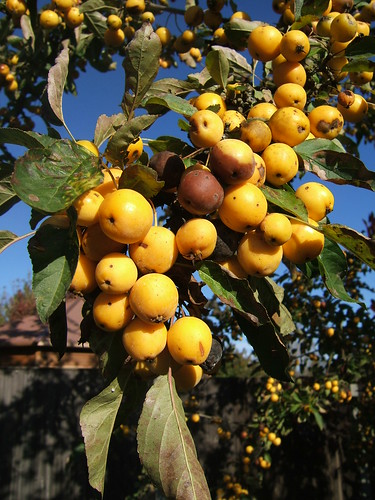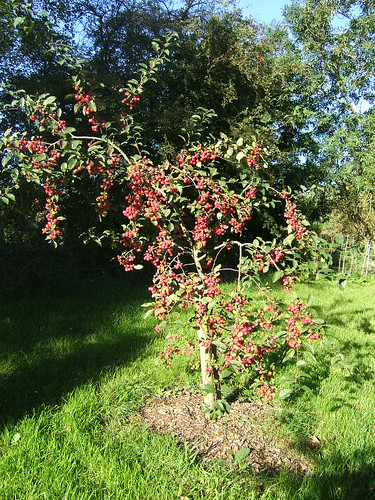Crab Apples (Malus sp.) make a great wildlife tree in the UK, I know that a number of cultivars are popular in the US too, although america seems to choose on flower quality whereas in the UK autumn colour from fruit seems to be a deciding factor. We have a native species, Malus sylvestris and most cultivars seem to stem from that here. This is the perenially popular Malus "golden hornet". Now expert wildlife gardeners will tell you that birds are less attracted to yellow fruit than red (due I believe to a quirk of their eyesight) and so if you only plant one Malus make it a red one. I would argue instead that these are small trees so why not plant one of each, giving you a) a nice contrast and b) food for the birds after they eat all the red ones and stop being so darn choosey. It forms quite an upright tree with slightly pendulous tips to the branches when weighted with fruit.
and here's a red that would make an ideal contrast. This is Malus robusta, a prolific fruiter and slightly more mop-headed species. This is in its second year with us which I think tells you rather a lot.
These are merely the tip of the iceberg when it comes to Malus but are both widely available and good quality plants. You can get fruit from near white to dark purple and differing leaf colours and flower shades. We have about 10 different cultivars (but like a moron I only photographed 3) and I'm familiar with many more so if anyone likes the sound of a marvellous malus drop me a comment and I will happily point you to some more varieties and stockists.


No comments:
Post a Comment